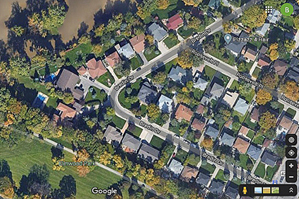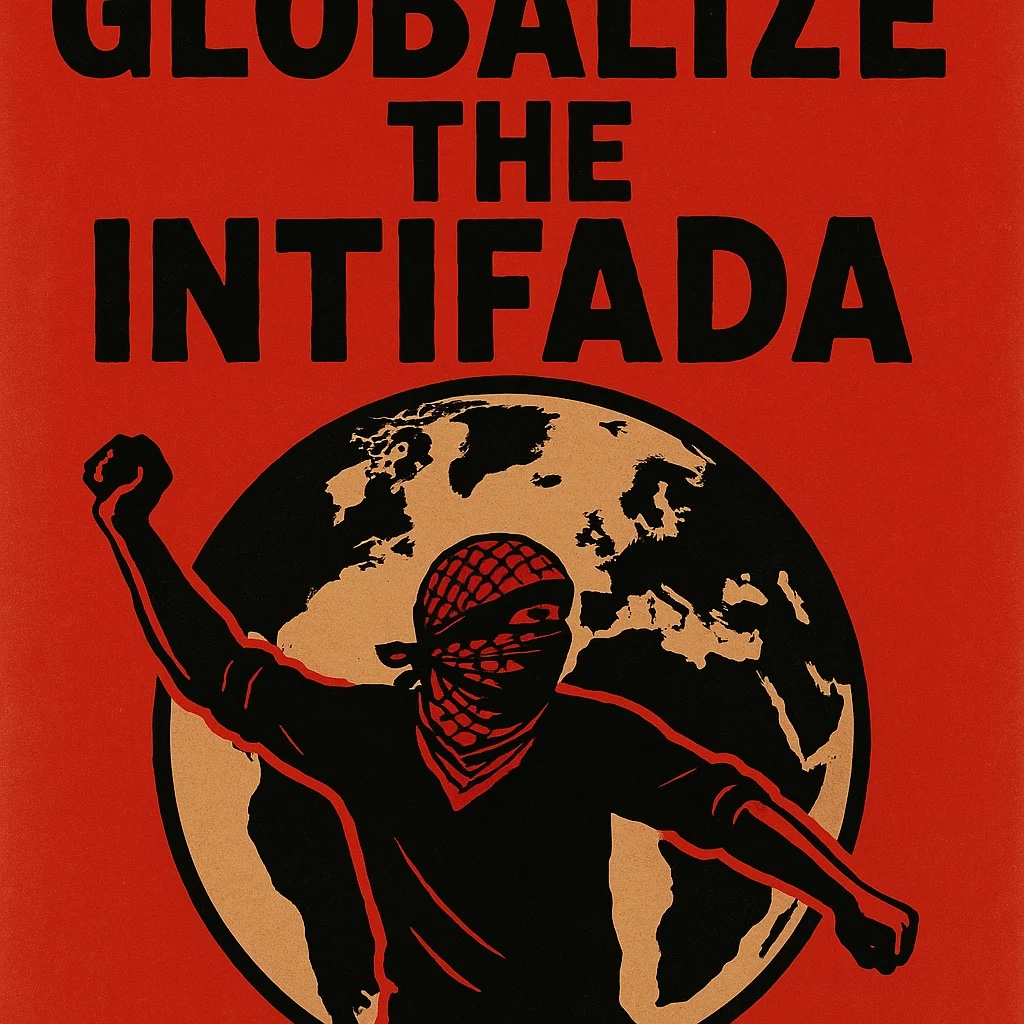Features
Meeting Michael Averbach- and reminiscing about Bredin Drive

By GERRY POSNER There I was sitting in a restaurant, my first time in one in over a year. It was inside or face the wasps outside. And since there was no one else inside, my good friend and former Winnipegger Dan Finkleman and I sat down at What a Bagel for our once a month lunch.
It is at these lunches where we both retreat to the glory years of the past and reflect on how sad it is that our grandkids will never know the kind of joy that came from growing up in the 50s and 60s in Winnipeg. We had just settled in when I spotted a guy who looked familiar to me. I immediately eliminated that thought as I could not imagine his being in Toronto, let alone this restaurant. Yet, he noticed me and fortunately (my mask was now off) he recognized me and he came over to the table. Finkleman remembered him vaguely ( there is a four-year age gap) and of course, his family. For the next 30 minutes, our visitor, Michael Averbach, chatted with us on all things Winnipeg. Now understand, he stood throughout the entire time, no doubt being careful not to get too close to us. I can imagine what our waitress was thinking as she, well – had to wait.
Now, that was a great visit. We covered a whole lot of ground in that conversation, ranging from where the clubhouse at Glendale was located to other matters relating to girls Dan knew or wanted to know, some of whom were related to Averbach and, in fact, ranging to why Averbach was in Toronto in the first place. You get the picture. I wondered who enjoyed this encounter the most, Finkleman, Averbach or me. Suffice to say that seeing Michael made me wonder about several things. The whole meeting with him was really a chance connection since, not only did Dan and I have to be at the same place at the same time as Michael, but we chose on this day to eat inside, as is our usual custom. Had we eaten outside, the likelihood of his seeing us would have been extremely low, because we would have been on the side of the restaurant and not visible to him.
Of course, one topic for discussion was the fact that Averbach was part of the Jewish Bredin Drive families in East Kildonan, There were, in fact more than a few families, but the names of Biillinkoff, Swartz, Freed, Bellan, Glesby, Snaper, Wolchock and Gobuty jump out at me. As well, we discussed Michael’s career, about which Dan was not fully up to date.
Averbach is a retired Chartered Accountant, something he did for over 45 years. Moreover, he is, I told Dan, a top golfer and one who must surely rank as one of the best Jewish golfers of all time in Manitoba (although I admit there is no such award for this category and neither do I know what the qualifications are to be included in the ranking. Just call it the Gerry Posner off the top of his head decision desk for Manitoba Jewish golfing greats.) What is a fact is that he is one of two people who served both on the board of Glendale and who also became President of the Manitoba Golf Association (the other being Manny Bricker). It was during this discussion on golf that we argued about the location of the original clubhouse at Glendale. However, if you think our conversation had little depth to it, you would be wrong, as we did canvass the federal election results and that subject gave way to some very definite opinions.
As Finkleman, Averbach and I concluded our time together, one certainty emerged from our long chat. We all agreed without hesitation that we were privileged to have grown up when and where we did. We had it easier than our children and far easier than it is for our grandkids, irrespective of being in Winnipeg or Toronto or Calgary. We lamented the path ahead for our grandkids today. (Among the three of us, we have 13). We also reached a clear consensus that Winnipeg was the better place to live. And, on that subject, we agreed to continue the conversation when Averbach is next in Toronto.
Later, I wondered where the various descendants of the Bredin Drive group enclave have gone? In fact, what I asked to nobody in particular was the reason why the families that moved to Bredin Drive settled in East Kildonan in the first place, an unlikely place for Jewish families to move to unless it was a desire to be closer to Jerusalem (somehow I think that was not the motivation)? Maybe it was the attempt to populate the area at that time with Jewish families. Or maybe it was the attraction of being close to the Red River. It certainly was not a need to be close to a synagogue since there was none in East Kildonan. And lest I forget, Bredin Drive was not the only street with Jews living in East Kildonan. I recall Glenwood Crescent and Roosevelt Place could round up a minyan. By the way, that information about the names of people and their residences is available to anyone who looks up Henderson’s Directory ( and where has that gone) for the 1950s and the personal information of each family and the address is set out in bold print. Alas, not possible today. What is possible is to go online and find this information without leaving your chair. Still, I took a shortcut and looked at an earlier article in this paper on the street wherein Shael Glesby (whose family lived on the street) listed many of the homes occupied by Jewish families in the 1950s. Here is the list Shael provided:
255 – Ratner (Max and Helen)
265 – Glesby (Bert & Silvia) original owners were Billinkoffs (Ben & Yetta)
275 – Billinkoff (Joe & Ann)
285 – Gobuty (James & Rae)
210 – Snaper (Mark & Ethel)
250 – Brownstein (Vicki)
260 – Wolchock (Bill & Rose)
300 – Freed (Max & Marion)
310 – Billinkoff (Ben & Yetta) after selling 265.
320 – Bellan (Sam & Marjorie)
There were three more Jewish families just north of 320, but I don’t know which houses were owned by which.
Swartz
Averbach
Jacobson
As I examined these names, I returned to my original question as to what ever happened to all of the descendants of the street, that is the kids from my time? I invite the readers to weigh in on the whereabouts of the Bredin Drive children (now, likely grandparents). There is a reunion waiting to happen. And to think all this was triggered by meeting Michael Averbach at a lunch in Toronto.
Ed. note: If you’d like to read my original article about Bredin Drive, which Gerry references and which appeared in our Sept. 16, 2020 issue, you can find it elsewhere on this website at http://jewishpostandnews.ca/8-features/561-a-tale-of-two-streets-that-proved-to-be-very-attractive-for-jewish-families-in-years-gone-by. By the way, that story quotes from a 1949 story in The Jewish Post that explained how Bredin Drive came to be and how so many Jewish families ended up there.
Features
Is This the End of Jewish Life in Western Countries?

By HENRY SREBRNIK “Globalize the Intifada” has been the chant echoing through streets since October 7th, 2023. It was never a metaphor, and we now see the gruesome results across the western world, from Australia to Canada: the rise of groups of large, active networks of Islamist and anti-Zionist organizations.
Jews in the West are discovering that the nations they defended, enriched, and profoundly shaped have become increasingly inhospitable. After the Holocaust, explicit Jew-hatred became unfashionable in polite society, but the impulse never disappeared. The workaround was simple: separate Zionism from Judaism in name, then recycle every old anti-Jewish trope and pin it on “the Zionists.”
We have seen the full legitimization of genocidal anti-Zionism and its enthusiastic adoption by large segments of the public. The protests themselves, as they began immediately on October 7th, were celebrations of the Hamas massacres. The encampments, the building occupations, the harassment campaigns against Jewish students, the open calls for intifada, the attacks on Jews and Jewish places have become our new norm. History shows us that antisemitism does not respond to reason, incentive or the honest appeals of the Jewish community.
Outside the United States, there is no Western political establishment with either the will or the capability to address this problem, let alone reverse its growth. I’m sorry to say this, but the future of Western Europe, Canada, Australia, and New Zealand is likely to be increasingly Jew-free.
Today, police stand and watch mobs chant for Israel’s destruction, call for the genocide of its people, harass visibly Jewish citizens, and drive antisemitic intimidation deep into urban life. They now believe their job is to enforce the law only if it does not risk upsetting violent constituencies. This makes Jews expendable, because defending them risks confrontation. This was very clear in the Bondi Beach massacre.
Jews are again donning caps instead of kippot, dressing generically with no cultural markers, and avoiding even a tote bag with Hebrew on it. A corrosive creep toward informal segregation in retail and service sectors is occurring, as Jewish customers report being refused service. A mezuzah hanging from a rideshare mirror leads to cancellations. When Jews express frustration, they are accused of exaggeration or attempting to suppress criticism of Israel. Jewish fear is not treated as a real problem.
“Jews Are Being Sent Back into Hiding,” the title of a Dec. 15 article in the New York Free Press by David Wolpe and Deborah Lipstadt, asserts that the attacks on Jews, including physical assaults, social media campaigns and, most tragically, the recent murders in Australia, are part of a purposive campaign designed to make Jews think twice about gathering with other Jews, entering a synagogue, going to kosher restaurants, putting a mezuzah on the doorpost of their apartments or dorm rooms, or wearing a Jewish star around their necks.
“We know of no one who would consider giving a niece, nephew, grandchild, or young friend a Jewish star without first asking permission of their parents,” they write. The unspoken, and sometimes spoken, question is: “Might wearing a star endanger your child’s well-being?”
Recently, a prominent American rabbi was entering a Target store in Chicago with her grandson, whom she had picked up from his Jewish day school. As they walked into the store the 10-year-old reached up and automatically took off his kippah and put it in his pocket. Seeing his grandmother’s quizzical look, he explained: “Mommy wants me to do that.”
Borrowing a phrase from another form of bigotry, they contend that Jews are going “back into the closet.” No public celebration of Hanukkah took place in 2025 without a significant police presence. Some people chose to stay home.
Lipstadt and Wolpe know whereof they speak. They are respectively a professor of history and Holocaust studies who served as the Biden administration’s ambassador tasked with combating antisemitism, the other a rabbi who travels to Jewish communities throughout the world, and who served on Harvard’s antisemitism task force in the aftermath of the October 7, 2023 pogrom.
What the world has seen over the past two years is a continual, often systematic attempt to terrorize Jews. When political leaders fail to condemn rather than merely “discourage” chants of “globalize the intifada,” we are seeding the ground for massacres like the Hannukah one in Sydney.
If each Jewish holiday will now be seen by antisemites as an opportunity for terror, then the prognosis for diaspora Jewry is bleak. There will be fewer public events, more alarms, more bag checks at doors; there will have to be more security and more police. Unless things change, Jewish life in the diaspora will become more sealed off from the larger society.
Why has this failure come about? Confronting antisemitism, stopping the mobs, challenging the activists, and disciplining antisemitic bureaucrats all carry electoral risk for politicians; Jews are demographically irrelevant, especially compared with Muslim voters, with the U.S. being the only partial exception.
There are those who suggest Jews stop donating funds to educational and other institutions that have turned against us. At this point, I doubt very much that withdrawing dollars will have an impact. For every dollar withdrawn, there will be 100 from Qatar and other sources in its place.
Throughout history, the way a society treats its Jews predicts its future with unerring accuracy. If Jews leave, it will be because a civilization that will not defend its Jews will also defend next to nothing and may itself not survive.
Henry Srebrnik is a professor of political science at the University of Prince Edward Island
Features
Canadian Travel Trends 2025 and the Forecast for 2026

Canadians planning to travel in 2026 should keep an eye on shifting trends and learn what’s coming their way in the new year.
Canadian travel has seen a fair amount of change and instability over the last few years, thanks mostly to the country’s southern neighbours. In 2025, and likely into 2026, travel trends in the Great White North have stabilized significantly, with more Canadians than ever choosing to travel within their own borders. And with 2026 nipping at our heels, let’s take a look at what trends in 2025 have been the most prevalent and how these will shape travellers’ decisions and travel plans in the new year.
Canadian Travel in 2025
Thanks to many factors, including politics, inflation, and airline competition, the majority of travellers opted to explore their own country rather than go abroad in 2025. More local travel money is remaining within the local economy, further bolstering it and making it an even more attractive travel choice. Thanks to the accessibility of private jet charter travel across Canada, luxury local travel has increased as well, with more people looking to immerse themselves in luxury from the start of their journey to the end. When travelling abroad, the U.S. is now the least favoured destination for most Canadian travellers, but Europe saw a significant increase in interest as 2025 progressed.
As local Canadian travel increased this year, it brought with it a drive for local tourists to find their own “Secret Canada” destinations. Far more “off the beaten path” trips were taken, resulting in more travel spending going to smaller or more boutique destinations rather than big city experiences. In 2025, travellers have sought out the wonderful diversity in destinations and landscapes, allowing themselves to access more grounded and authentically Canadian experiences.
Canada’s Government has also encouraged and benefited from local tourism, with initiatives like the Canada Strong Pass offering extra benefits. Initially implemented in the summer, but reintroduced from December 12, 2025, until January 15, 2026, this is a ticket to enjoying the richness of their own culture (iconic natural destinations, museums, train trips) at a discounted rate or even in some cases free of charge.

In the second quarter of 2025, locals took a total of 90.6 million trips that included at least some time spent travelling domestically, which indicated a rise of 10.9% on a year-over-year basis. Of these trips, 58.6 million were day trip experiences (an increase of 12.4%), and 32.0 million were overnight trips or longer (an increase of 8.4%).
Between April and June of this year, Canadian residents spent $20.3 billion on local tourism, which represented a 13.5% year-over-year increase. When undertaking day trips, Canadians spent approximately $101 per visit. On overnight trips, locals spent around $449 per trip, with an average trip length of 2.6 nights. The Great White North is clearly holding its own, and then some, in the international travel market.
Canadian Travel in 2026
As we move towards 2026, many trends from 2025 will remain the standard, but some will evolve to fit changing demands. Across the board, though, the outlook for the coming year is that Canadian travel will become a far more personal thing, with trips being customized to fit travellers’ requirements and desires more closely than ever before. From choosing a hotel that they feel smacks of a beloved destination in their favourite novel, to taking a trip to a destination just to try a snack that’s famously made there and only there, travel is stretching and shifting for the traveller rather than the other way around.
Here are some slightly more specific predictions for the coming year based on the answers of polled Canadians.

- One Gen Z-led trend is the idea of “glowmad travel”. Beauty and skincare are now influencing the places that Gen Z travels, and their trips are far more likely to include visits to skincare and beauty destinations like spas and luxury stores.
- Gen Z adults are helping to drive another trend: family travel as a way to save money. 345 of Gen Z adults polled say that they would take this route.
- More than 70% of Canadians are considering some sort of mountainous getaway in 2026, specifically in summer or autumn.
- 48% of polled Canadians say they would book or consider a destination thanks to the influence of literature.
- More travellers than ever are choosing their destinations based on the accommodations available. 44% of polled travellers say that in 2026, accommodation and what it can offer comes first, and the surrounding destination comes second.
The World Is Your Nova Scotia Lobster Roll
Choose something a little different when you vacation this year. Oysters are great, but a Nova Scotia lobster roll might be more to your taste! Canadians know good travel, so take a maple leaf out of their book and experience something new this year.
Features
Fake IDs and Underage Bettors: The Growing Problem for Sportsbooks
The expansion of legalized sports betting worldwide has resulted in sportsbooks grappling with a problem that they can no longer overlook: the increase in underage individuals using counterfeit identification to place bets. As more and more ways to bet through mobile apps and online sign-ups emerge, minors who are set on their goal are inventing ways to get around age limits. The emergence of this trend is a breach of the law and morality; however, it is also an enormous problem that threatens the very existence of the platforms, which are forced to rigorously obey the regulations .
Why Fake IDs Are Becoming More Sophisticated
Conventional fakes used to be quite simple to recognize—low-quality printing, different fonts for the text, and inconsistent holograms would make them not very reliable for any kind of verification. But counterfeit documents have changed significantly over time. Nowadays, fakes are made better with the help of printing technology and software, and they can even copy barcodes and other scannable features, so their IDs look almost real.
This fact complicates things significantly for sportsbooks, especially those operating online. Most of the time, automated identity verification systems capture a user’s photo and perform basic data matching. In cases where a very good fake ID is used by a teenager who looks older, some systems cannot recognize the trick. Therefore, young bettors have found ways to be able to place wagers through these loopholes.
The Influence of Social Pressure and Online Culture
Social media is a major factor in the increase in risky behavior that minors are engaging in. On various platforms such as Instagram, TikTok, and Reddit, teenagers come across betting slips, parlay wins, and big-payout screenshots that are shared, most probably, by other users. The glamorization of sports betting is leading young people to copy the behavior of influencers, older friends, or even celebrities, as they think that it is the right thing to do.
The competitiveness usually associated with sports is one of the reasons some minors decide to bet on sports. For many, betting becomes another way to engage as a fan—by predicting outcomes, challenging friends, and experiencing the same excitement that adult fans enjoy. Unfortunately, only a small number of minors fully understand the financial risks involved, making them more vulnerable to developing harmful patterns that could continue into adulthood. This is why choosing the most responsible sportsbook, which you can discover more here, is essential. Such platforms provide guidance, enforce safe practices, and ensure regulated play, allowing fans to engage with sports betting in a more informed, secure, and controlled manner.
Sportsbooks Facing Regulatory Pressure
The sportsbooks are being given the task of more closely monitoring and preventing minors from betting on their platforms. If they fail, harsh penalties are possible, including severe fines, loss of a gambling license, and negative publicity that undermines a brand’s trustworthiness. As a result, it is becoming increasingly difficult for people to verify their identities, although this also inconveniences those who are, in fact, legitimate users.
Sportsbooks have to decide between two options that are in conflict with each other: on the one hand, they have to keep the registration process as simple as possible, and on the other hand, they have to carry out age verification in a very thorough manner. The work of balancing is tough, and the underage gamblers are trying all methods to find a way out.
The Rise of Identity Fraud Services
An alarming trend is the emergence of online vendors who openly advertise fake IDs and identity documents. These vendors often claim their products can pass standard sportsbook checks. Some even tailor IDs to specific regions, knowing that certain provinces, states, or countries use verification systems that rely heavily on image comparison rather than live validation.
The availability of these fraudulent services not only empowers minors but also exposes sportsbooks to risks related to stolen identities, money laundering flags, and fraudulent accounts that may later become legal liabilities.
The Consequences for Underage Bettors
While a minor might think that gambling is just a bit of fun without any harm, the outcome can be quite serious. If there is a catching, accounts are closed right away, winnings are confiscated, and parents or guardians, in some cases, are made legally liable for any financial disagreements. Besides that, the risk of developing a gambling problem in the future increases with early exposure to gambling, especially since teenagers are more impulsive and less capable of handling financial risks.
The majority of minors are not aware that sportsbooks keep very detailed records of their activities, including device information and IP addresses. In case a fake ID works one time, using it multiple times will definitely lead to getting caught.
A Growing Problem That Requires Joint Action
Fake IDs and underage betting are issues that have become a major challenge in the industry, and no single stakeholder can solve these problems on their own. Sportsbooks need to enhance their identity verifications, regulators should get prepared for new types of fraud, technology providers have to come up with new solutions more quickly, and parents should always be aware of what their children are doing online. The industry’s rapid development is making this problem more and more urgent because the number of minors trying to get around the safety measures is increasing.
Sports betting can serve as a fun and legal form of entertainment for adults, but the need to protect the youth is what defines the industry and ensures its survival in the long run. As the quality of fake IDs keeps improving and the online culture is more and more inclined to consider betting as a normal activity, sportsbooks must ensure that underage users do not have access and that the environment is safe for all users. They need to do this now more than ever.

